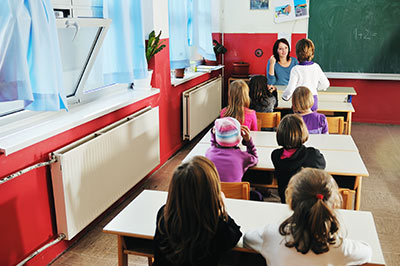By: Andrea Gordon (July 05, 2013). It was a crisp March day outside Blaydon Public School when teachers discovered that 4-year-old Alex Wong could spell his name. There were no pencils or paper in sight. Everyone was bundled in winter jackets. Alex, who has autism, was in the outdoor classroom where his special-needs class played and explored for at least an hour every day, alongside 25 kids from the mainstream kindergarten class. Teacher Sue Cooper noticed Alex march over to a pile of wood, put three sticks in a small wheelbarrow and push it to a spot on the pavement. One by one, he placed the sticks on the ground, forming the letter A. He made three more trips and came back with sticks to make three more letters, which he placed in a row: L, E and X.
Tag: Special Education
Technology in Special Education Classrooms
Federal Requirements For Special Education Classroom Design
Teaching Methods & Strategies, 2015
An Interview with Magda Mostafa: Pioneer in Autism Design
Quirk, V. (2014). In 2002, Magda Mostafa, a then-PhD student at Cairo University, was given an exciting project: to design Egypt’s first educational centre for autism. The young architect set herself down to the task of researching into autism design, certain she’d soon find guidelines and accessibility codes to direct her through the process (after all, about one in every 88 children is estimated to fall into the autism spectrum).
ARCHITECTURE FOR AUTISM: Autism ASPECTSS™ in School Design
Mostafa, M. (2014). Architecture, as a science, deals with the manipulation of the physical environment to facilitate certain functions and elicit intended behavior. This environment is comprised primarily of sensory elements- textures, colors, patterns, acoustics etc. In accordance to the sensory definition of autism, these elements play an important role in autistic behavior and their cognition and integration are at the core of the disorder. This definition is the basis of the Autism ASPECTSS™ Design Index as discussed here. The objective of this paper is to illustrate the use of this index and its seven principles- Acoustics, Spatial sequencing, Escape, Compartmentalization, Transition spaces, Sensory zoning and Safety- as a design development tool. The paper summarizes the impact of these principles on the development of spatial design criteria for the Advance Center for Special Needs in Qattameya, Cairo, designed by Progressive Architects, and presents a possible prototype for schools for autism which would follow the ASPECTSS principles.




